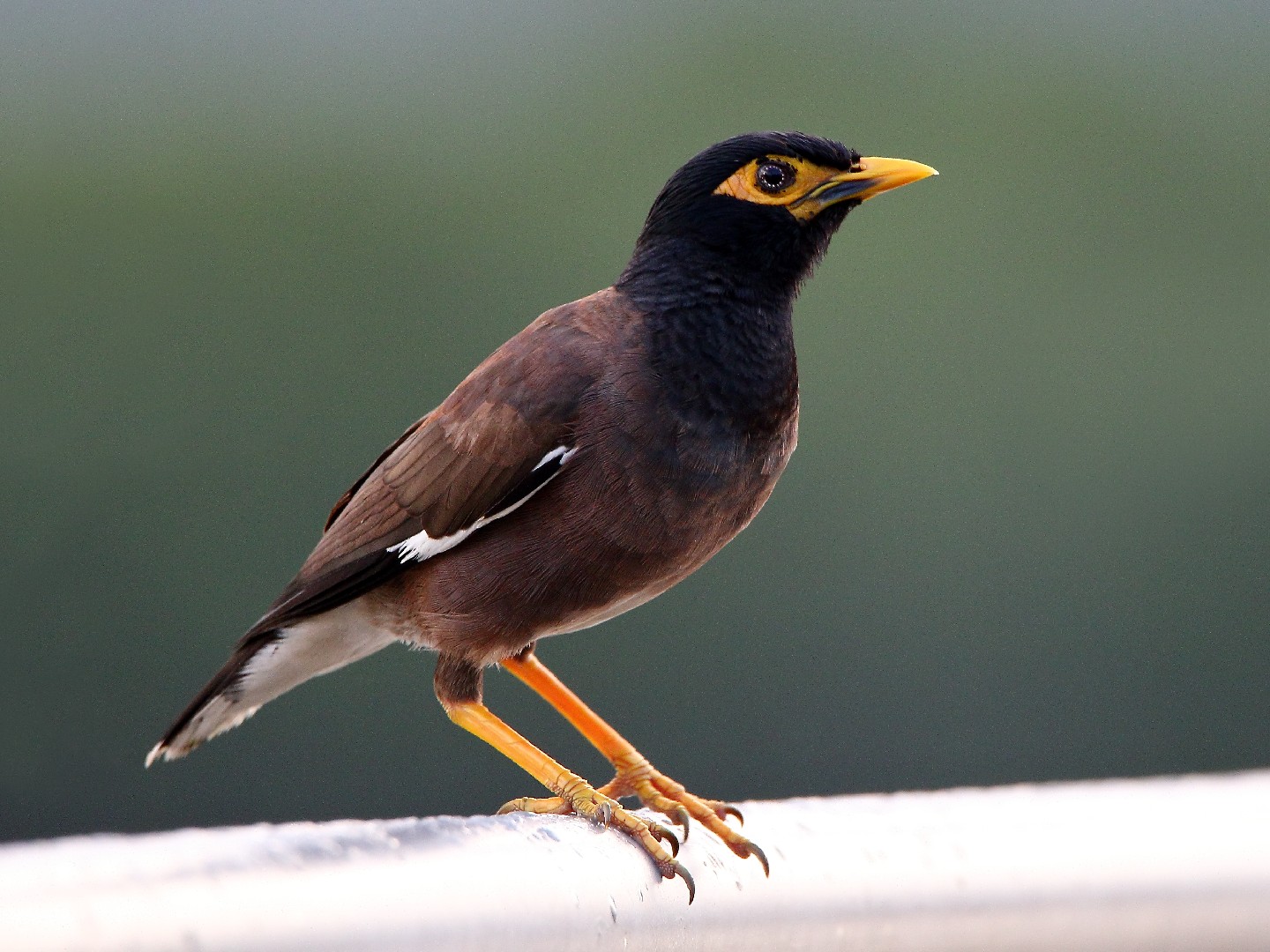Common Myna
A species of Typical mynas, Also known as Common Mynah Scientific name : Acridotheres tristis Genus : Typical mynas
Common Myna, A species of Typical mynas
Also known as:
Common Mynah
Botanical name: Acridotheres tristis
Genus: Typical mynas
Content
Description People often ask General Info
 Photo By Summerdrought , used under CC-BY-SA-4.0 /Cropped and compressed from original
Photo By Summerdrought , used under CC-BY-SA-4.0 /Cropped and compressed from original Description
The common Myna is a large, stocky starling that prefers to live near humans in towns and suburban areas. It forages among tall grasses for grasshoppers; in fact, its scientific name, Acridotheres tristis, means "grasshopper hunter." The common Myna likes to maintain two roosts at the same time - both a temporary summer roost near the breeding site as well as a year-round roost where the female can sit and brood.
Size
25 cm
Life Expectancy
12 years
Nest Placement
Building
Feeding Habits
Common Myna is omnivorous, consuming insects, arachnids, reptiles, small mammals, seeds, grain, fruits, and waste. It forages on the ground, hunting grasshoppers as implied by its name.
Habitat
Common Myna primarily occupies open woodlands, cultivated territories, and human-influenced landscapes such as urban and suburban areas. Favoring environments similar to their native South Asian habitats, they are typically found at lower elevations near vertical structures and sparse ground vegetation. Their adaptability allows them to inhabit regions from plains to foothills up to 3,000 meters, and they have successfully colonized diverse habitats globally, provided there is proximity to water and sufficient tree presence.
Dite type
Omnivorous
People often ask
General Info
Feeding Habits
Bird food type
Bird Feeder Type

Platform
Behavior
Common mynas roost communally throughout the year, either in pure or mixed flocks. The function of communal roosting is to synchronise various social activities, avoid predators, exchange information about food sources. Communal displays (pre-roosting and post-roosting) consist of aerial maneuvers which are exhibited in the pre-breeding season (November to March). 
Distribution Area
It is a species of bird native to Asia with its initial home range spanning from Iran, Pakistan, India, Nepal, Bhutan, Bangladesh and Sri Lanka; as well as Afghanistan, Uzbekistan, Tajikistan, Turkmenistan, Myanmar, to Malaysia, Singapore, peninsular Thailand, Indochina, Japan (both mainland Japan and the Ryukyu Islands) and China. The common myna has been introduced in many other parts of the world. 
Species Status
Not globally threatened.
Scientific Classification
Phylum
Chordates Class
Birds Order
Perching birds Family
Starlings Genus
Typical mynas Species
Common Myna